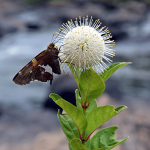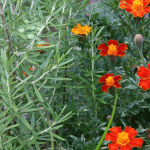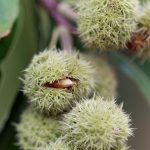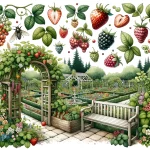Attracting Wildlife: How to Attract Diverse Wildlife to Your Garden
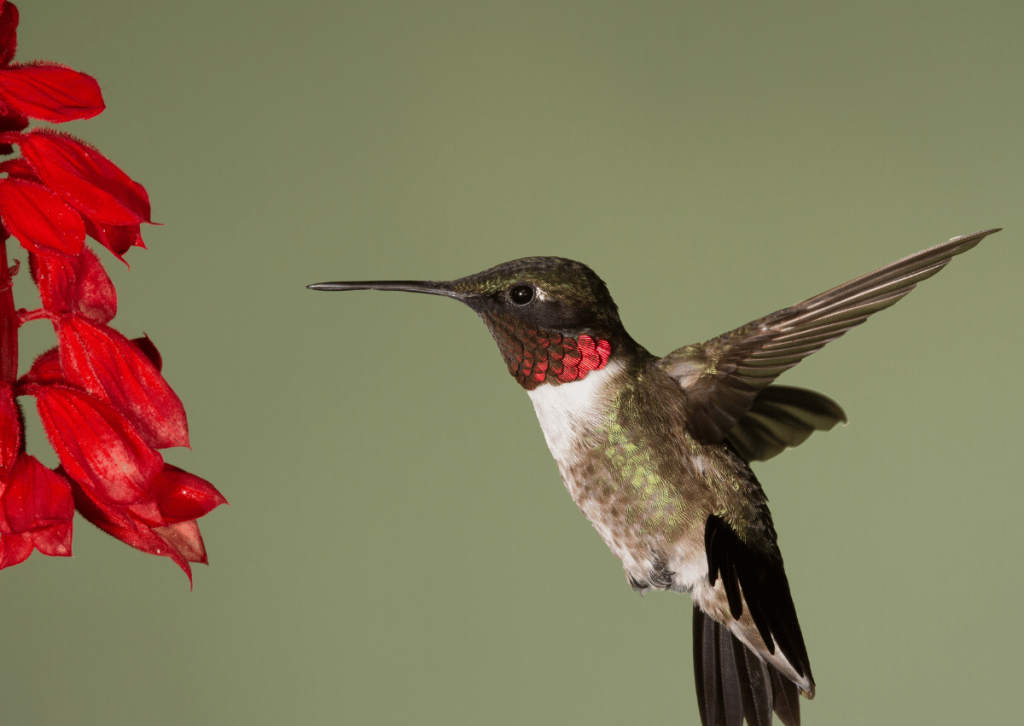
Attracting wildlife to your garden is not only a rewarding experience, but it also plays a crucial role in supporting local ecosystems. From the smallest insects to the most colorful birds, each creature contributes to the biodiversity of your garden. Biodiversity, or the variety of life in a particular habitat, is vital for maintaining a balanced and healthy environment. By attracting diverse wildlife, your garden becomes a microcosm of the larger ecosystem, providing a sanctuary for various species and contributing to their survival.
In this guide, we’ll explore the importance of garden biodiversity, delving into why it matters and how your garden can contribute to the overall biodiversity in your local area. We’ll discuss the benefits of attracting diverse wildlife, from enhancing the beauty of your garden to supporting pollination and natural pest control.
Another key aspect we’ll explore is the role of native species (for benefits of non-invasive non-native species look here). Native species are plants and animals that have evolved in a specific region over thousands of years. They are well-adapted to local conditions and play a vital role in local ecosystems. By incorporating native species into your garden, you can create a habitat that supports a wide range of wildlife, contributing to the conservation of these species while also enhancing the biodiversity of your garden.
Throughout this guide, we’ll provide practical tips and strategies for attracting wildlife to your garden. Whether you’re a seasoned gardener or a beginner, you’ll find valuable insights and advice that can help you create a garden that is not only beautiful but also teeming with life.
So, if you’re ready to embark on a journey to transform your garden into a wildlife haven, read on. Let’s explore how you can attract diverse wildlife to your garden and contribute to the preservation of our planet’s biodiversity.
The Importance of Garden Biodiversity
Biodiversity, a term that encapsulates the variety of life within a specific habitat or ecosystem, is a fundamental aspect of our planet’s health. It includes all species of plants, animals, and microorganisms, as well as the intricate web of relationships they form with each other. But what makes biodiversity so vital, and how do our gardens contribute to it?
Each species, regardless of its size or perceived significance, plays a unique role within its ecosystem. Bees and butterflies, for instance, are critical pollinators, assisting in plant reproduction. Birds and small mammals help control pest populations by consuming insects, while worms and other soil-dwelling organisms enhance soil quality, promoting plant growth. This intricate network of interactions creates a balanced and thriving environment, demonstrating the importance of biodiversity.
Small Gardens, Big Impact: Fostering Biodiversity
Despite their relatively small size, gardens can significantly contribute to supporting biodiversity. In urban and suburban landscapes, gardens can act as miniature nature reserves, offering habitats for a diverse range of wildlife. They provide essential resources, such as food, water, and shelter, to various species, from birds and insects to amphibians and small mammals. By cultivating a wildlife-friendly garden, you’re creating a sanctuary for these creatures, aiding their survival and fostering biodiversity.
The presence of diverse wildlife in your garden isn’t just beneficial for the environment; it also enhances your gardening experience. A garden teeming with life is a visual delight and provides endless opportunities for nature observation and photography.
Additionally, a biodiverse garden supports natural pest control. By attracting a variety of insects and birds, you can maintain a balance in pest populations, reducing the need for chemical pesticides. This approach is not only environmentally friendly but also promotes healthier plant growth in your garden.
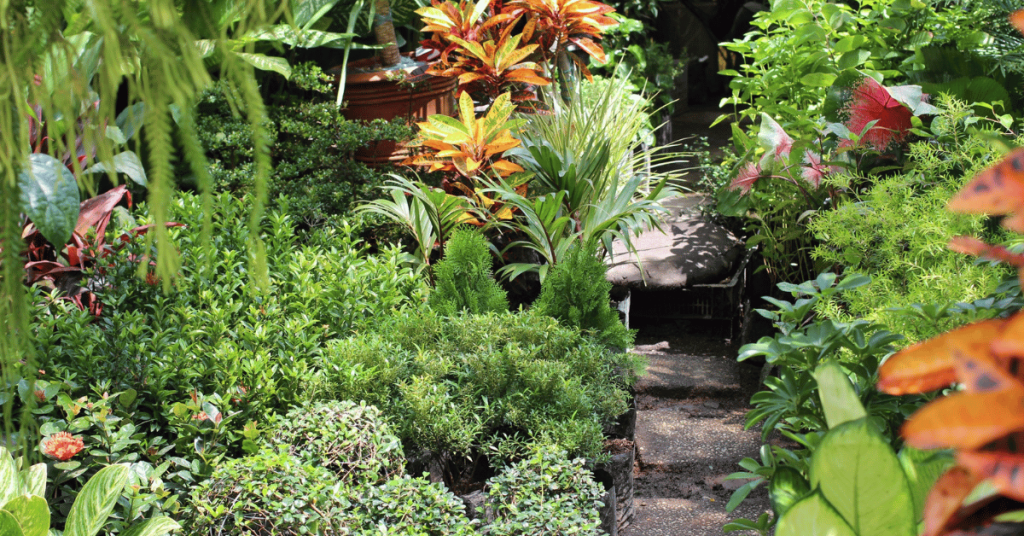
Promoting garden biodiversity also contributes to our mental well-being. Numerous studies suggest that spending time in nature can alleviate stress and improve mood. A garden bustling with life offers a sense of peace and tranquility, providing a welcome respite from the demands of daily life.
Green spaces aren’t just for nature – they boost our mental health too
https://www.newscientist.com/article/mg24933270-800-green-spaces-arent-just-for-nature-they-boost-our-mental-health-too/
In essence, garden biodiversity is a crucial element in the health of our planet and offers numerous benefits for us and our gardens. By attracting diverse wildlife to our gardens, we can support biodiversity conservation while enhancing our outdoor spaces.
Understanding Native Species
Native species are plants, animals, and other organisms that have naturally evolved in a specific region or environment over thousands of years. They are perfectly adapted to the local climate, soil, and other environmental conditions, as well as the other species that share their habitat. Understanding native species, their importance, and their role in garden biodiversity is crucial for anyone looking to attract diverse wildlife to their garden.
Native species are integral to their ecosystems. They have established relationships with other local plants and animals, often providing food and habitat for various wildlife. For example, native plants often have specific relationships with local pollinators like bees, butterflies, and birds. These relationships have developed over millennia and are crucial for the survival of these species.
Let’s consider some examples of native species in different regions.
- Northeastern United States, the Eastern Redbud tree is a native species that provide nectar for early spring pollinators.
- In the UK, the English Oak is a native tree species that supports hundreds of different organisms, including insects, birds, and mammals.
- Australia, the Eucalyptus tree is a native species that provide food and habitat for a wide range of wildlife, including the iconic koala.
The Power of Native Plants in Attracting Wildlife
Incorporating native species into your garden can significantly enhance its biodiversity. Native plants, in particular, can attract a wide range of wildlife. They provide food sources for local insects, birds, and mammals, from nectar for pollinators to leaves for caterpillars. Native plants also offer suitable habitats for various species, from nesting sites for birds to shelter for small mammals.
Moreover, native species are often more resilient and require less maintenance than non-native species. They are adapted to local conditions, meaning they can generally withstand local pests, diseases, and weather conditions without the need for chemical pesticides or additional watering. This makes them a sustainable choice for your garden.
In essence, native species are a cornerstone of local ecosystems and garden biodiversity. By understanding and incorporating native species into your garden, you can create a vibrant, wildlife-friendly space that supports local biodiversity and provides a haven for a diverse range of wildlife.
How to Attract Wildlife to Your Garden
Creating a garden that attracts a diverse range of wildlife is a rewarding endeavor that contributes significantly to local biodiversity. Here, we’ll explore some general tips and strategies that can help you transform your garden into a wildlife haven.
Basic Necessities for Wildlife
One of the first steps in attracting wildlife to your garden is to provide the basic necessities: food, water, and shelter.
Planting a variety of native plants can offer a range of food sources, from nectar for pollinators to seeds and berries for birds. A simple bird feeder or a bird bath can also attract a variety of bird species to your garden.
Water is another essential element. A small pond can provide a habitat for amphibians like frogs and newts, while also attracting insects like dragonflies. If a pond isn’t feasible, even a small dish of water can provide a vital drinking spot for birds and insects.
Shelter is equally important. Dense shrubs, log piles, and bird boxes can provide safe places for wildlife to nest and hide from predators. Leaving a patch of your garden ‘wild’, with long grass and piles of leaves, can also create valuable habitat for a range of species.
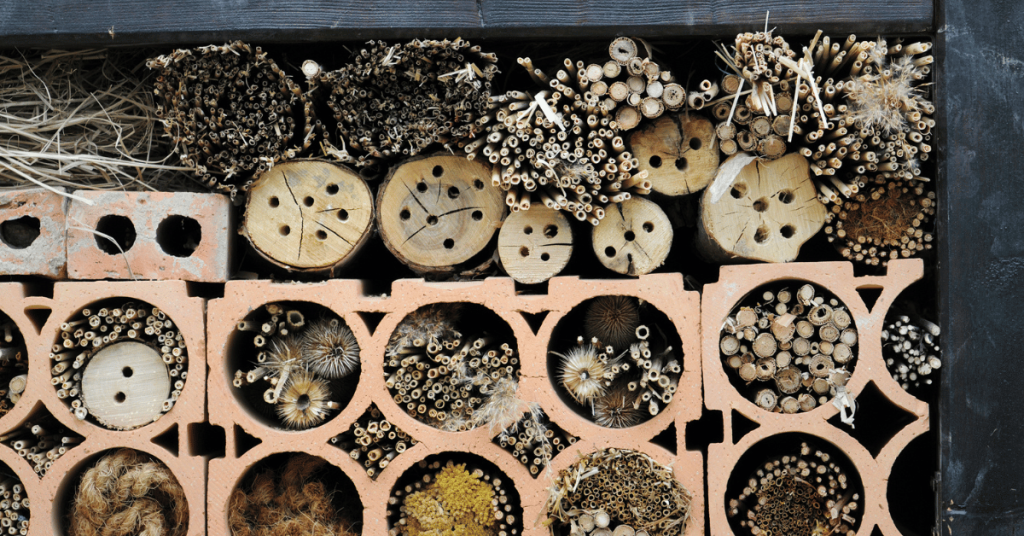
Embracing Natural Pest Control Over Chemicals
Another key strategy is to avoid using chemical pesticides and fertilizers. These can harm wildlife and disrupt the natural balance of your garden. Instead, consider natural pest control methods, such as encouraging beneficial insects and birds that eat common garden pests.
Plant diversity is also crucial. A variety of plants can provide food and shelter for a wider range of species throughout the year. Consider plants that flower and bear fruit at different times to ensure a constant food supply.
Creating a wildlife-friendly environment is not just about attracting wildlife, but also about ensuring their survival and well-being once they’re there. This involves considering the needs of different species and creating a garden that can sustain them. For example, some species may require specific plants for feeding or nesting, while others may need certain habitat features, like ponds or dead wood.
In essence, attracting wildlife to your garden involves more than just providing food and shelter. It’s about creating a diverse, sustainable environment that meets the needs of various species. By doing so, you can contribute to local biodiversity and enjoy the many benefits of a wildlife-friendly garden.
Specific Ways to Attract Different Types of Wildlife
While creating a general wildlife-friendly environment is crucial, there are also specific strategies you can employ to attract different types of wildlife to your garden. Let’s explore some of these strategies, focusing on birds, insects, and small mammals.
Attracting Birds
Birds are a delightful addition to any garden, providing a symphony of song and a splash of color. To attract birds, consider providing food, water, and nesting sites. Bird feeders filled with seeds, nuts, or fat balls can attract a variety of bird species. A bird bath not only provides a drinking spot but also a place for birds to bathe and preen. Nesting boxes can provide valuable nesting sites, particularly in gardens where natural nesting spots are scarce. Remember to place bird feeders and nesting boxes out of reach of predators.
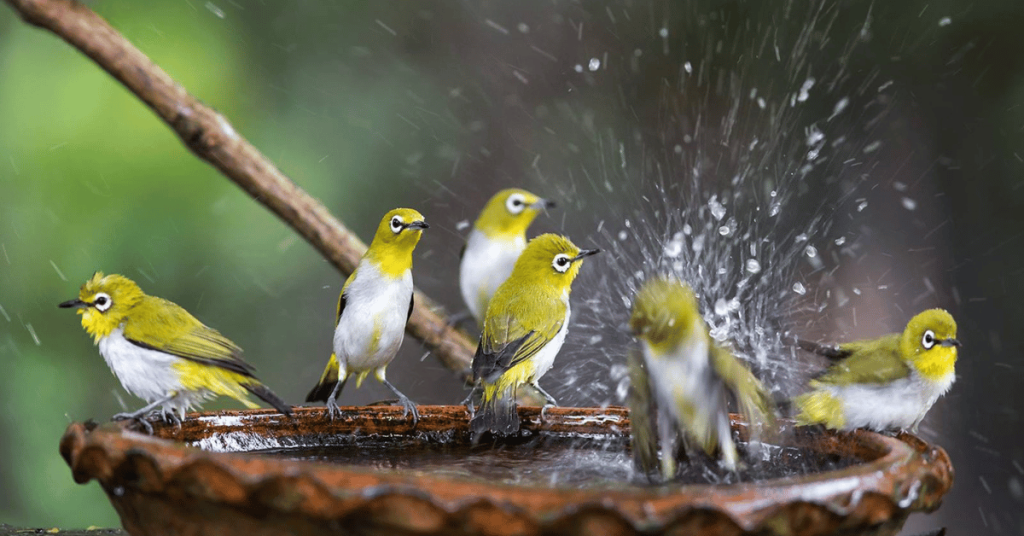
Attracting Insects
Insects, though often overlooked, are vital for a healthy garden. They pollinate flowers, control pests, and provide food for other wildlife. To attract insects, consider planting native flowering plants. Different insects are attracted to different types of flowers, so a variety of plants can attract a variety of insects. You can also create insect hotels, which provide shelter for insects like bees and beetles. These can be bought or made from materials like bamboo, wood, and straw.
Attracting Small Mammals
Small mammals like hedgehogs, squirrels, and bats can also be attracted to your garden. Providing shelter is key. Log piles, hedgehog houses, and bat boxes can provide safe places for these animals to rest and breed. Food sources are also important. For hedgehogs, a dish of cat food can be a welcome meal. For squirrels, a feeder filled with nuts can be a draw. Remember to provide fresh water as well.
It’s important to note that attracting wildlife to your garden is not an overnight process. It can take time for wildlife to find and start using the resources you provide. But with patience and persistence, you can create a garden that supports a diverse range of wildlife, contributing to local biodiversity and providing you with endless opportunities to enjoy the beauty of nature.
The Role of Plants in Attracting Wildlife
Plants play a pivotal role in attracting wildlife to your garden. They provide essential resources, such as food and shelter, and contribute to the overall biodiversity of your garden. Choosing the right plants is therefore a crucial step in creating a wildlife-friendly garden.
The importance of choosing the right plants cannot be overstated. Different plants attract different types of wildlife. For example, plants with tubular flowers, like honeysuckle or foxglove, are particularly attractive to bees and butterflies, while berry-producing plants, like holly or rowan, provide food for birds. Plants also provide shelter and nesting sites for various species. Dense shrubs can offer safe nesting spots for birds, while long grass can provide a habitat for insects and small mammals.
Catering to Wildlife Needs with Thoughtful Plant Selection
So, how do you choose plants that attract wildlife? The first step is to consider the needs of the wildlife you want to attract. If you want to attract pollinators, choose plants with plenty of nectar, like lavender or buddleia. If you want to attract birds, consider plants that produce berries or seeds. It’s also important to consider plants that provide resources throughout the year. For example, early-flowering plants can provide nectar for insects in spring, while late-flowering plants can provide food in autumn when other sources are scarce.
Native plants play a particularly important role in attracting native species. As mentioned earlier, native species have evolved over thousands of years to adapt to local conditions and have developed relationships with local wildlife. Native plants are often the preferred food source for many native insects and birds. By incorporating native plants into your garden, you can attract a range of native wildlife and contribute to their conservation.
Moreover, native plants are generally more resilient and require less maintenance than non-native species. They are adapted to local conditions, meaning they can generally withstand local pests, diseases, and weather conditions without the need for chemical pesticides or additional watering. This makes them a sustainable choice for your garden.
In essence, plants are the foundation of a wildlife-friendly garden. By choosing the right plants, particularly native species, you can create a vibrant, biodiverse garden that attracts a wide range of wildlife.
Challenges in Attracting Wildlife and How to Overcome Them
While attracting wildlife to your garden is a rewarding endeavor, it can also present certain challenges. Understanding these challenges and knowing how to overcome them can help you create a successful wildlife-friendly garden.
One common challenge is the lack of immediate results. Attracting wildlife is not an overnight process. It can take time for wildlife to discover and start using the resources you provide. This can be particularly true in urban areas, where wildlife may be less abundant. However, patience is key. Continue to provide food, water, and shelter, and over time, wildlife will start to visit your garden.
Unwanted Visitors
Another challenge is dealing with unwanted visitors. While you may be keen to attract certain species, you may find that other, less welcome species also visit your garden. For example, you may want to attract birds but find that squirrels are eating the bird food. In such cases, there are specific strategies you can employ. For example, there are bird feeders available that are designed to be squirrel-proof.
Pests
Pests can also be a challenge. Slugs and snails can decimate your plants, while aphids can damage your flowers. However, a wildlife-friendly garden can provide natural solutions to these problems. Birds, hedgehogs, and certain insects are natural predators of slugs and snails, while ladybirds, lacewings, and other insects can help control aphid populations. Encouraging these beneficial creatures can help keep pest populations in check.
Maintaining Ecological Balance in Your Garden
Maintaining a balance can also be a challenge. You want to attract a variety of species, but you also want to avoid one species becoming so abundant that it dominates your garden. Plant diversity is key here. By providing a range of food sources and habitats, you can attract a variety of species and avoid favoring one species over others.
In essence, while attracting wildlife to your garden can present certain challenges, these can be overcome with patience, knowledge, and the right strategies. By understanding the potential challenges and how to overcome them, you can create a successful, biodiverse garden that supports a wide range of wildlife.
Conclusion
As we reach the end of this guide, let’s take a moment to reflect on the journey we’ve embarked on together. We’ve explored the importance of attracting wildlife to our gardens, delved into the role of native species, and discussed various strategies for creating a wildlife-friendly garden.
Attracting wildlife to our gardens is more than just a hobby; it’s a way of contributing to the health of our local ecosystems and the planet as a whole. Each bird that visits our bird feeder, each bee that buzzes around our flowers, and each hedgehog that makes a home in our garden is a testament to the vitality of nature. By creating a garden that supports a diverse range of wildlife, we’re not only enhancing the beauty and interest of our own outdoor spaces, but also making a positive impact on local biodiversity.
The role of native species in this endeavor cannot be overstated. These plants and animals, perfectly adapted to our local conditions, form the backbone of our local ecosystems. By incorporating native species into our gardens, we’re supporting these species and the wildlife that depends on them. We’re also creating gardens that are resilient, sustainable, and deeply connected to the natural world around us.
We’ve also discussed some of the challenges that can arise when attracting wildlife to our gardens, from dealing with unwanted visitors to maintaining a balance of species. However, with patience, knowledge, and the right strategies, these challenges can be overcome. The rewards of a wildlife-friendly garden – the buzz of bees, the song of birds, the sight of butterflies flitting from flower to flower – are well worth the effort.
So, as we conclude this guide, we encourage you to embark on your own journey toward a wildlife-friendly garden. Whether you’re starting with a blank canvas or looking to enhance an existing garden, every step you take towards attracting wildlife is a step towards a more biodiverse and sustainable future. Remember, every garden, no matter how small, can make a difference. So, let’s start making a difference, one garden at a time.
Some sources used in this article
- “Gardening For Wildlife – The RSPB”. This source provides information on how to create a wildlife-friendly garden, including tips on planting for wildlife, creating habitats, and dealing with problematic visitors. Link
- “Native Plants – The National Wildlife Federation”. This source provides information on the importance of native plants in supporting wildlife and maintaining a healthy environment. It also discusses the benefits of using native plants in your garden. Link
Deepen Your Sustainable Gardening Journey
As you enhance your garden’s ability to attract diverse wildlife, it’s valuable to explore broader sustainable land management practices. Our feature, “Unearthing Potential: Hugelkultur on Raw Land,” delves into the innovative approach of applying hugelkultur techniques to raw, undeveloped land. This method enriches the soil and fosters a thriving ecosystem, beneficial for a wide array of wildlife.

